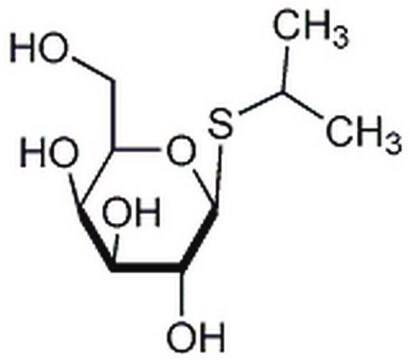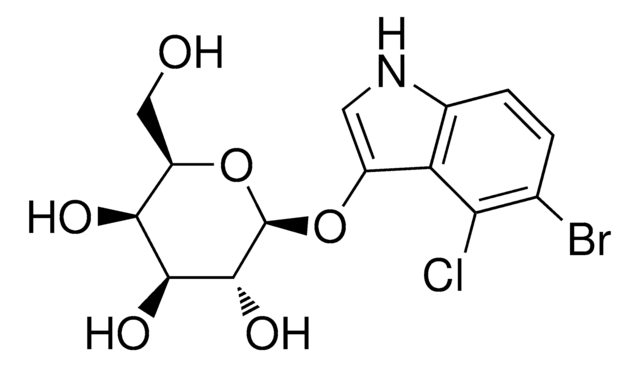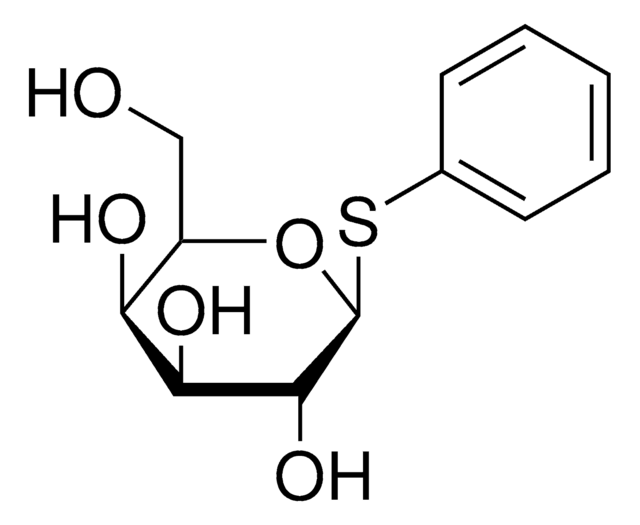I5502
Isopropyl β-D-1-thiogalactopyranoside
≥99% (TLC)
Synonym(s):
IPTG, Isopropyl β-D-thiogalactoside
About This Item
Recommended Products
description
non-ionic
Quality Level
Assay
≥99% (TLC)
form
powder
technique(s)
thin layer chromatography (TLC): suitable
impurities
10.0-22.0% Dioxane
color
white to off-white
mp
120 -122 °C ((248 - 252 °F ))
solubility
water: 50 mg/mL, clear, colorless
storage temp.
2-8°C
SMILES string
CC(C)S[C@@H]1OC(CO)[C@H](O)C(O)[C@H]1O
InChI
1S/C9H18O5S/c1-4(2)15-9-8(13)7(12)6(11)5(3-10)14-9/h4-13H,3H2,1-2H3/t5-,6+,7+,8-,9+/m1/s1
InChI key
BPHPUYQFMNQIOC-NXRLNHOXSA-N
Looking for similar products? Visit Product Comparison Guide
Application
Other Notes
Reconstitution
Signal Word
WarningDanger
Hazard Statements
Precautionary Statements
Hazard Classifications
Carc. 1B - Eye Irrit. 2
Supplementary Hazards
Storage Class Code
6.1C - Combustible, acute toxic Cat.3 / toxic compounds or compounds which causing chronic effects
WGK
WGK 3
Flash Point(F)
Not applicable
Flash Point(C)
Not applicable
Regulatory Listings
Regulatory Listings are mainly provided for chemical products. Only limited information can be provided here for non-chemical products. No entry means none of the components are listed. It is the user’s obligation to ensure the safe and legal use of the product.
EU REACH SVHC Candidate List
EU REACH Annex XVII (Restriction List)
Choose from one of the most recent versions:
Already Own This Product?
Find documentation for the products that you have recently purchased in the Document Library.
Customers Also Viewed
Our team of scientists has experience in all areas of research including Life Science, Material Science, Chemical Synthesis, Chromatography, Analytical and many others.
Contact Technical Service





